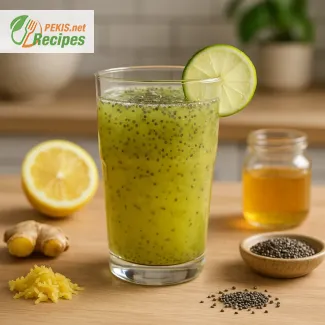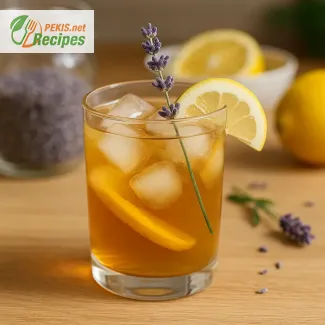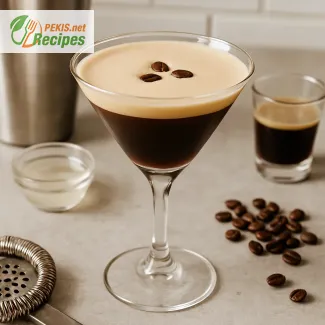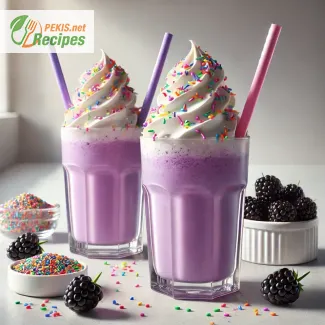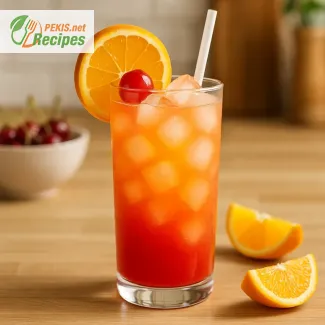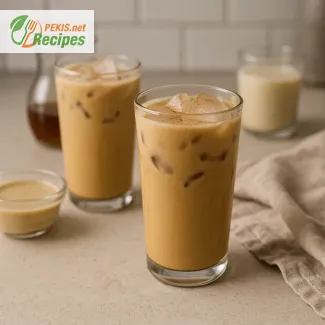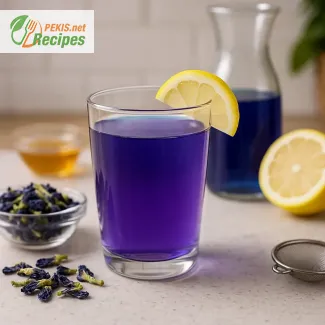
Discover the Magic of Blue: A Deep Dive into Butterfly Pea Tea
What makes butterfly pea tea a unique experience?
Butterfly pea tea, known for its striking vibrant blue color and color-changing properties, is a traditional herbal infusion that has captivated tea lovers, food stylists, and wellness enthusiasts alike. Made from the dried petals of the Clitoria ternatea flower, this tea is more than just a beverage—it's a natural spectacle in a cup. With its origins in Southeast Asia, butterfly pea tea has grown in popularity worldwide due to its natural coloring abilities and mild, earthy flavor, often compared to green tea or chamomile.
The natural transformation: from blue to purple
One of the most remarkable traits of butterfly pea flower tea is its ability to shift in color based on pH levels. When brewed, it produces a rich cobalt blue hue, but once acidic ingredients like lemon juice or hibiscus are added, the tea transitions into shades of purple or pink. This transformation has made it a favorite for cocktails, mocktails, and desserts, especially during warmer months when vibrant, refreshing drinks are in high demand.
This property is not just beautiful—it’s entirely natural, derived from the anthocyanins in the petals. These natural pigments respond to acidity, allowing for creative experimentation in both culinary and mixology contexts. Whether used in a clear glass teapot for dramatic effect or incorporated into a summer beverage lineup, butterfly pea tea offers more than taste—it's an immersive sensory experience.
A tradition reborn: from Thai medicine to global trend
Historically used in Ayurvedic and Thai traditional medicine, butterfly pea flower tea was brewed to support calmness, focus, and overall wellness. Today, it's a trending choice in functional beverages and natural wellness drinks, appearing in cafes, social media feeds, and upscale restaurants. Its vivid hue has also made it popular in the world of plant-based cooking, where natural, clean-label ingredients are in high demand.
The tea is usually served either hot or iced, but it shines particularly as a cold brew or in layered drinks where visual separation of colors can create eye-catching gradients. This makes it ideal for parties, photo-friendly brunches, and creative food styling. Despite its exotic appearance, preparing butterfly pea tea is simple and accessible—requiring just dried petals and water.
How to use butterfly pea tea in creative recipes
Beyond being a standalone tea, butterfly pea tea is a versatile base for a wide range of culinary uses. Its neutral, slightly floral taste makes it an excellent carrier of flavors in mixed drinks. Popular combinations include butterfly pea lemonade, blue latte, and blue mojito. It’s also used in rice dishes, pancakes, and gelatin desserts, giving a natural blue tone without synthetic additives.
For bakers and chefs seeking natural food coloring alternatives, this tea delivers stunning results while maintaining clean labeling standards. Its compatibility with both sweet and savory profiles makes it a favorite among professionals and home cooks alike.
Seasonality and serving suggestions
While butterfly pea flower tea can be enjoyed year-round, it sees the highest popularity during spring and summer, especially in iced or cold-brewed forms. Its refreshing taste and visual appeal make it a go-to option for summer detox drinks, herbal refreshers, or seasonal wellness menus. For best presentation, serve the tea in a clear glass cup with a lemon wedge on the side—allowing drinkers to enjoy the visual shift firsthand.
Whether served as a standalone herbal tea, a vibrant cocktail base, or a culinary ingredient, butterfly pea tea continues to grow as a versatile and health-forward beverage embraced by professionals and enthusiasts worldwide.
- Boil the water (500 ml / 2 cups) until it reaches a gentle simmer, around 90–95°C (195–203°F).
- Add the dried butterfly pea flowers (2 g / 1 tbsp) to the hot water. Stir gently to fully submerge the petals.
- Steep for 5–7 minutes, depending on desired color intensity. The liquid will turn a deep, vibrant blue.
- Strain the tea using a fine mesh sieve or tea filter into serving glasses or a heatproof jug.
- If serving warm, proceed to step 6. For iced tea, let it cool for 10 minutes, then pour over ice cubes.
- To enhance the visual experience, add lemon juice (10 ml / 2 tsp) just before serving. The pH change will shift the tea’s color from blue to purple.
- Optionally, sweeten with honey or agave syrup (15 ml / 1 tbsp) and stir well.
- Serve immediately in clear glasses for full visual effect.
Enhance Your Herbal Tea Ritual: Creative Twists for Butterfly Pea Tea
Ways to upgrade the classic recipe with flavor, color, and health
The basic preparation of butterfly pea tea is already a sensory masterpiece, but with a few smart tweaks, this vibrant drink can transform from a simple infusion into a signature beverage. From taste elevation to health-focused enhancements, the flexibility of this naturally blue tea makes it a playground for both culinary creatives and wellness enthusiasts. Here’s how to make the most of it.
Infusing citrus for more than color change
Adding lemon juice is the most well-known way to shift the color of butterfly pea tea from blue to purple. But beyond the visual transformation, citrus also introduces a tangy brightness that complements the tea’s subtle earthy flavor. If you want a more complex citrus note, consider adding a slice of orange, lime, or even grapefruit. Each brings its own acidity and aromatic oils, creating a more layered taste profile.
To further balance sweetness and acidity, swap traditional lemon juice with yuzu or calamansi, which offer nuanced citrus flavors not commonly found in Western tea recipes.
Natural sweeteners and floral synergy
Many people opt to add honey or agave syrup, but the choice of sweetener can dramatically affect the drink's overall character. Wildflower honey enhances the tea’s floral undertones, while maple syrup adds a deeper, caramel-like complexity. For a refined sugar-free option, stevia leaves can be steeped directly with the petals.
For those who enjoy floral notes, try adding a few dried lavender buds, hibiscus petals, or rosehips to the blend. These not only enhance aroma but also contribute additional antioxidants and visual interest. Hibiscus, in particular, intensifies the red tones when lemon is added, creating a richer magenta hue.
Herbal and botanical boosters
Infusing fresh mint, ginger slices, or lemongrass stalks adds refreshing and digestive-friendly elements to your butterfly pea tea. Mint delivers a cooling sensation that’s perfect for hot weather, while ginger introduces a warm spice that balances the tea's natural earthiness.
Lemongrass adds citrusy depth and subtle sweetness, making it ideal for iced versions. Adding these elements during steeping ensures their essential oils are released gently, without overpowering the butterfly pea flowers.
Cold brew for smooth, mellow flavor
For those who find the steeped tea slightly bitter, cold brewing is an excellent alternative. Simply soak the dried flowers in room-temperature or cold water for 6–12 hours. This method extracts a gentler flavor with a smoother finish, and the result is a bright blue tea without any tannic bitterness. Cold brew is ideal for mixing with sparkling water or kombucha.
If you plan to serve it at gatherings, cold brew batches can be made in advance and stored in glass bottles, making preparation effortless.
Homemade vs. bottled: purity matters
While pre-packaged butterfly pea teas and powders are now available in many health stores, homemade butterfly pea tea stands out in terms of freshness and purity. Store-bought versions may contain preservatives, flavor enhancers, or lower-grade petals that lack the vibrant pigmentation of whole dried flowers. By preparing your own tea, you control the strength, ingredients, and presentation—plus, the aromatic oils remain intact when you store the flowers correctly.
Homemade versions also allow for zero-waste customization, using compostable loose petals and glass jars for storage.
Common mistakes to avoid when brewing
One of the most frequent mistakes is using boiling water, which can scald the delicate petals and result in a dull, greyish-blue infusion. Instead, aim for water just under the boil (around 90–95°C / 195–203°F) to preserve the vibrant pigment.
Another pitfall is oversteeping. Leaving the flowers in water too long can release bitter compounds and muddle the flavor. Stick to a steeping time of 5–7 minutes unless cold brewing.
Lastly, avoid adding lemon or sweetener during the steeping process—always introduce those after straining, to maintain control over acidity and sweetness.
Creating healthier versions with added benefits
While butterfly pea tea is naturally caffeine-free and low-calorie, there are ways to elevate its nutritional impact. Adding chia seeds after cooling not only provides fiber and omega-3 fatty acids but also gives the drink a unique texture. It’s an excellent addition for those looking to increase satiety or support digestion.
For immune-boosting variations, try steeping with turmeric root slices or adding a pinch of black pepper, which enhances the absorption of curcumin in turmeric. These additions introduce warmth and complexity, perfect for colder months.
Replacing honey with date syrup or coconut nectar can lower the glycemic index of the tea while introducing natural minerals like potassium and magnesium.
Texture and presentation enhancements
To elevate the presentation, serve the tea in clear glass mugs with visible garnishes like lemon twists, edible flowers, or ice spheres. Using large ice cubes slows dilution, keeping the flavor consistent longer. For a more luxurious feel, try layering the drink with coconut milk, creating an ombré effect that also softens the tea’s astringency.
Butterfly pea tea is also a perfect base for mocktails. Mix it with coconut water, sparkling water, or a dash of apple cider vinegar for added complexity and visual appeal.
When combined thoughtfully, even a simple herbal tea like butterfly pea can become a standout creation—full of color, flavor, wellness benefits, and personal flair.
Allergens present in the recipe:
- None (naturally gluten-free, nut-free, dairy-free)
Substitution tips:
- For low glycemic alternatives, replace honey with stevia or erythritol.
- For a spicier variation, add a slice of fresh ginger or mint leaves while steeping.
Vitamins and minerals per serving (approximate):
- Vitamin A – 180 µg: Supports vision and immune system.
- Vitamin C – 5 mg: Aids in collagen production and antioxidant defense.
- Iron – 0.3 mg: Supports oxygen transport.
- Calcium – 4 mg: Important for bone health.
- Magnesium – 6 mg: Helps regulate muscle and nerve function.
- Potassium – 20 mg: Supports heart and kidney function.
Antioxidants per serving (approximate):
- Anthocyanins – 200 mg: Powerful compounds that combat oxidative stress and may reduce inflammation.
- Flavonoids – 30 mg: Contribute to cellular protection and support cardiovascular health.
